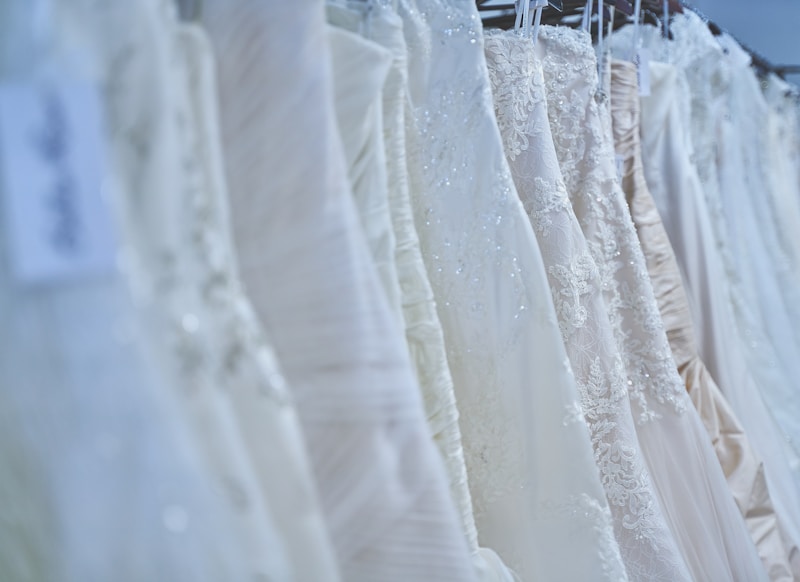Understanding the Cost Structure of Bridal Stores: A Comprehensive Guide
Understanding the Cost Structure of Bridal Stores: A Comprehensive Guide
The bridal industry is a vibrant and lucrative market, steadily growing to match the evolving tastes and preferences of brides-to-be. Many entrepreneurs venture into this field, driven by a passion for wedding fashion and a desire to create memorable experiences. However, before diving deep into bridal entrepreneurship, it is crucial to understand the cost structure of bridal stores. This article explores various aspects of these costs, helping prospective business owners make informed decisions.
Introduction to Bridal Store Cost Structure
Bridal stores encompass a range of products and services, all of which contribute to their overall cost structure. Understanding these costs is vital for setting competitive prices, maximizing profit margins, and ensuring the sustainability of the business. The primary components that contribute to the cost structure of bridal stores include:
- Inventory Costs
- Operating Expenses
- Staff Salaries
- Marketing Expenses
- Rent and Utilities
- Miscellaneous Costs
1. Inventory Costs
Inventory costs comprise one of the most significant expenses for bridal stores. This includes the purchase of wedding dresses, accessories, shoes, and bridal party attire. As trends fluctuate, keeping inventory that is both appealing and up to date can be challenging.
| Type of Inventory | Estimated Cost Range |
| Wedding Dresses | $500 - $5,000 each |
| Accessories (Veils, Jewelry) | $50 - $500 each |
| Bridal Party Attire | $150 - $1,500 per piece |
This table summarizes typical inventory costs that a bridal store might encounter. The accuracy of these estimates varies widely depending on the brand, designer, and quality levels. The ability to source affordable inventory while maintaining quality will greatly affect profitability.

2. Operating Expenses
Operating expenses encompass the everyday costs of running a bridal store. These include:
- Utilities (electricity, water, internet)
- Maintenance and repairs
- Insurance
- Software tools for management
Such expenses can collectively add a substantial amount to the monthly financial obligations of a bridal shop. It's essential to keep track of these costs to monitor profitability.
3. Staff Salaries
Hiring skilled staff is crucial in the bridal industry, where customer service can make or break the business. The costs associated with staff salaries can include:
- Sales Associates
- Alteration Specialists
- Administrative Staff
The average salary for a bridal sales associate in the United States is approximately $30,000 per year, while alteration specialists may earn between $15 to $30 per hour, depending on their expertise and location. Understanding and budgeting for these salaries is key to ensuring your bridal store runs smoothly.
4. Marketing Expenses
Marketing is essential for attracting new clients and maintaining a visible presence in the wedding industry. Costs can include:
- Online Advertising (social media, Google Ads)
- Website Development and Maintenance
- Print Marketing (brochures, business cards)
- Participation in Bridal Shows
Depending on the scale of marketing efforts, these costs can vary widely. A successful marketing strategy should be tailored specifically to your target demographic while considering seasonal changes and trends within the bridal industry.
5. Rent and Utilities
Physical location plays a significant role in the success of a bridal store. Rent can vary drastically depending on the city, neighborhood, and storefront visibility. In metropolitan areas, rent could range from $2,000 to $10,000 per month, while smaller towns may experience much lower costs.
Utility bills are generally an additional expense that adds to the overall operational costs. It's wise to conduct thorough research regarding rental prices and utility estimates in your intended location.
6. Miscellaneous Costs
These costs can include a variety of expenses that do not fall neatly into the above categories. Examples include:
- Licensing Fees
- Memberships to Local Bridal Associations
- Training and Development for Staff
While often overlooked, these costs can accumulate and must be included in your overall budget planning.
Summarizing Cost Structure Considerations
Understanding the cost structure of bridal stores is paramount for achieving financial success in this competitive industry. Business owners should focus extensively on managing their inventory costs while keeping operating expenses and salaries in check. Strategic budgeting and financial forecasting can help ensure a bridal store operates within its means while also allowing for growth and expansion.
In conclusion, prospective bridal store owners should prioritize the following steps:
- Develop a detailed business plan outlining all costs.
- Regularly review financial statements to track actual expenses versus estimated costs.
- Stay informed about market trends to adjust inventory accordingly.
By taking these recommendations to heart, aspiring bridal shop entrepreneurs can navigate the complexities of costs effectively and carve out their niche in the thriving bridal market.
